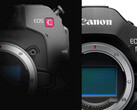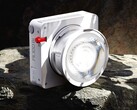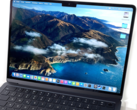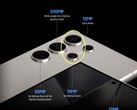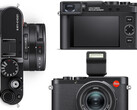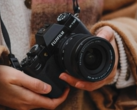1. Fujifilm X-S20 (or X-T50) - compact, tactile, great colours
Much of Fujifilm's camera line-up could serve as a good fill-in for someone looking for a compact, capable camera, but the X-S20 is uniquely suited to battle the Panasonic Lumix S9 because of its compact form factor, simplified control scheme, and video-centric features.
Stepping things up from the maligned Lumix S9, the Fujifilm X-S20 features 6K open-gate 4:2:2, 10-bit video (instead of 4:2:0 on the Lumix), and it has Fujifilm's film simulations and outstanding colour science to compact Panasonic's unique LUT options. The 26 MP sensor in the X-S20 also features 5-axis image stabilisation, rated to 7 stops, as opposed to the Lumix S9's 6.5 stops. The X-S20 is also pretty much just as compact as the Lumix S9 in all the ways that matter, coming in at just 127 × 85 × 65 mm compared to the Lumix S9's 126 × 74 × 47 mm.
While the Fujifilm X-S20 is an APS-C camera, obviously missing out on some of that full-frame hype that the Lumix S9 is riding on, a look to the bright side might see this as a benefit. Instead of having to compromise your kit with limited compact prime lenses or sacrifice on size and weight with powerful full-frame glass, the X-S20 uses native APS-C lenses, which are usually smaller and lighter.
The Fujifilm X-S20 retails for only $1,299.95 (or $1,699.99 with an XF16–50 mm kit lens) at the time of writing.
The Fujifilm X-T50 (curr. $1,799.99 with the XF16–50 mm F/2.8–4.8 R LM WR kit lens) is also a viable alternative to the Lumix S9, although it's slightly more expensive than the X-S20 and has features more geared to photography than hybrid shooting.
2. OM System OM-5 (or OM-D EM-5 Mark III) - an affordable small camera with excellent features
When talking about small cameras, it's inevitable that Micro Four Thirds enter the conversation, and for good reason — small sensors allow for small bodies. However, while Panasonic's latest M4/3 cameras, like the Lumix G9 II are great in their own right, they're just too bulky to justify the smaller sensor. The OM System OM-5 (curr. $999.99 on Amazon), on the other hand, stands out as a feature-rich Micro Four Thirds camera that doesn't make too many sacrifices in order to maintain the small footprint.
The OM System OM-5 is the company's latest mid-range Micro Four Thirds camera, and it is capable of everything from 4K 30p recording at 237 Mbps to 30 fps photography burst modes. It also features fast, accurate phase detect autofocus, and a footprint of just 125 × 85 × 50 mm (4.92 × 3.35 × 1.97″), making it ever so slightly taller than the Lumix S9. It also has a grip designed for human hands as well as an EVF and mechanical shutter, eliminating many of the Lumix S9's drawbacks.
The OM-5 lacks the Lumix S9's support for 6K open gate video and 10-bit recording, though, so if that's important to you, look elsewhere. Otherwise, there are very few drawbacks to the OM-5 that aren't related to the smaller Micro Four Thirds sensor, and even the concerns of poor low-light performance from M4/3 sensors has largely been mitigated by modern technology. It also offers superb value, considering the features you get at the price point — especially for a camera aimed at vloggers and social media posters.
The Olympus OM-D E-M1 Mark II also deserves an honourable mention here, due to its solid feature set and ridiculously low price of just $527 on Amazon. It is also capable of shooting 4K 30p, 4:2:2, 10-bit video, and it has the same 20 MP Micro Four Thirds sensor, weather sealing, and 5-axis IBIS as the OM System OM-5. The OM-D E-M1 Mark II was also one of the first M4/3 cameras to feature phase-detect autofocus, and is still more than enough to keep up with even very demanding photography work — especially for those looking for a powerful, compact camera.
3. Panasonic Lumix S5II - a little less compact, a lot more powerful
For those looking to stay in the full-frame realm, the Panasonic Lumix S5II and S5IIx are logical alternatives to the Lumix S9, especially for those looking for a less compromised experience.
Sure, the Lumix S5 II is bigger than the S9 (134 × 102 × 90 mm, compared to the S9's 126 × 74 × 47 mm), but it's also far less limited. It has an EVF, features the same sensor — thus image and video quality — as the Lumix S9, and it has a mechanical shutter, EVF, headphone port, and dual SD cards, none of which are present on the Lumix S9. The Lumix S5II also has a much more substantial grip and tactile control scheme than the Lumix S9, making it a better shooting experience for longer days.
At the time of writing, the Panasonic Lumix S5II comes in at $1,797.99 on Amazon, and can be bundled with a Lumix S Series 35 mm F/1.8 prime lens for $2,097.98, making it a little pricier than the Lumix S9, but far less limited.
4. Sony A6700 - smaller, cheaper, APS-C-er
Sony's A6000 series cameras have long been a strong competitor in the APS-C hybrid and video market, and the latest Sony A6700 is no different. Coming in at just 122.0 × 69.0 × 75.1 mm — smaller than the Lumix S9 in all but depth — and with similar video capabilities, although trading 6K open-gate for downsampled 4K, the Sony A6700 punches above its weight class.
It also features a similarly minimalist control scheme as the Lumix S9, but it's less limited in terms of actual hardware, coming replete with an EVF, hot shoe, mechanical shutter, and 5-axis image stabilisation rated to five stops of compensation. The A6700 is capable of 4K video at up to 120p, and it has built-in headphone and microphone jacks for video fanatics.
The A6700 also benefits from the Sony E-Mount, and although there aren't all that many APS-C-specific E-Mount lenses, there are plenty of sharp, well-built full-frame lenses for the Sony E-Mount, making it a worthy competitor to the Lumix S9. The A6700 also has the benefit of Sony's industry-leading autofocus system, which is quite literally second to none, especially when it comes to subject tracking and video applications — there's a reason Sony has become a favourite in YouTube studios of all sizes.
The Sony Alpha 6700 is available on Amazon for $1,398, undercutting the Lumix S9 by just over $100 and providing a rather solid shooting experience, given its compact size.









